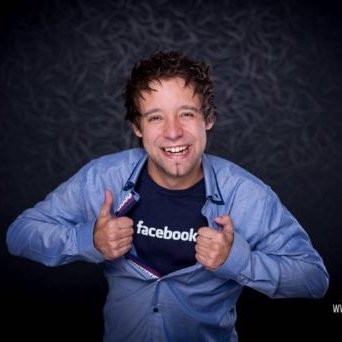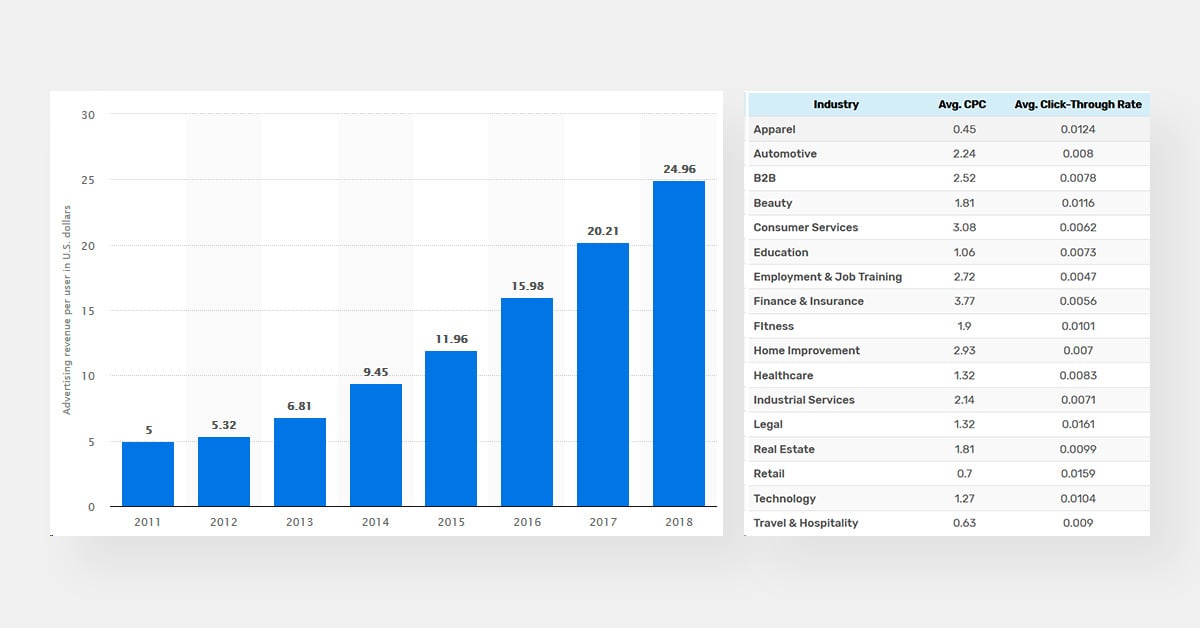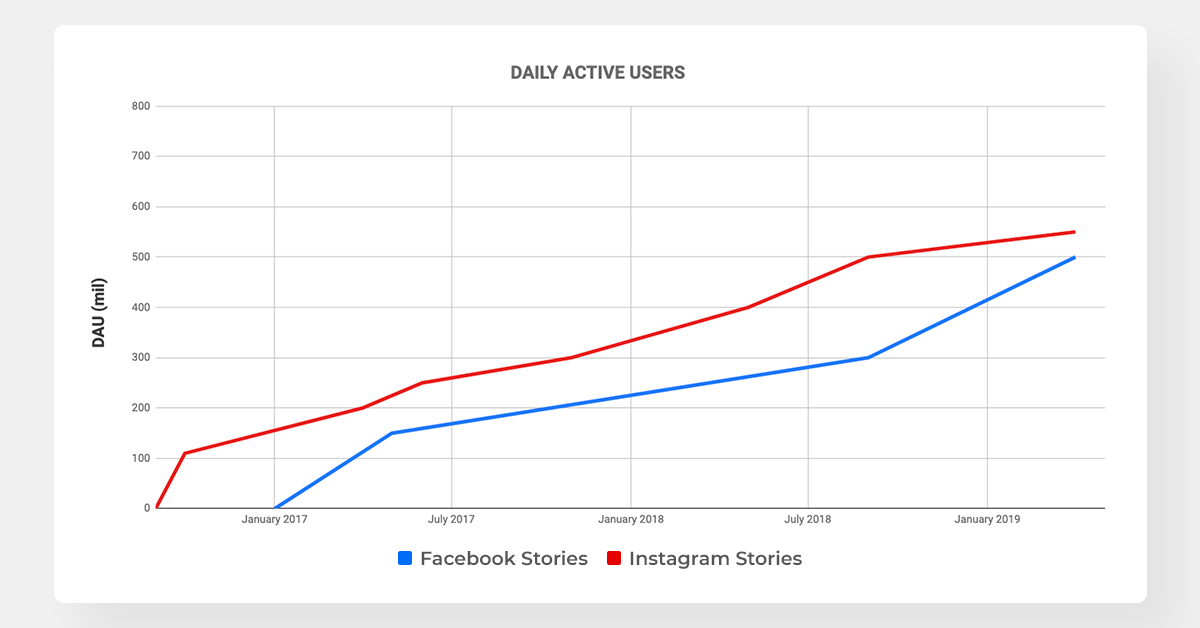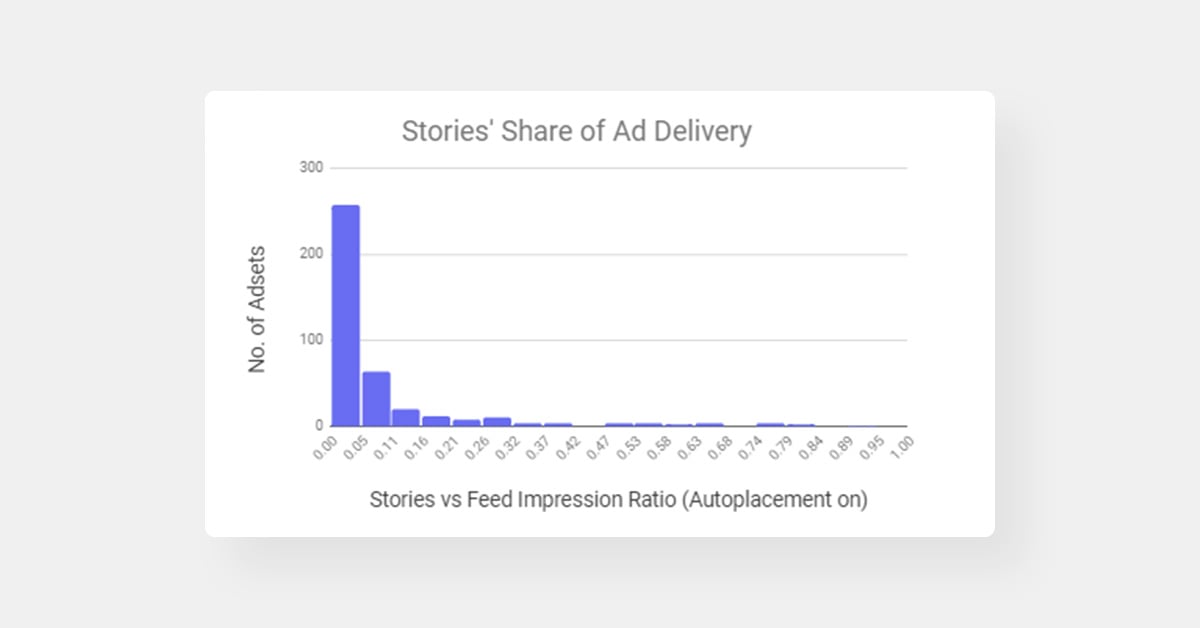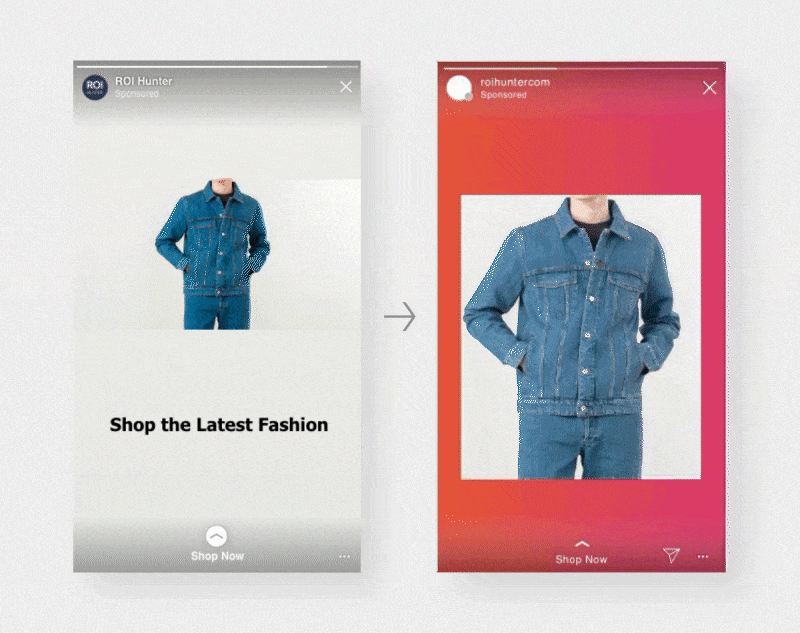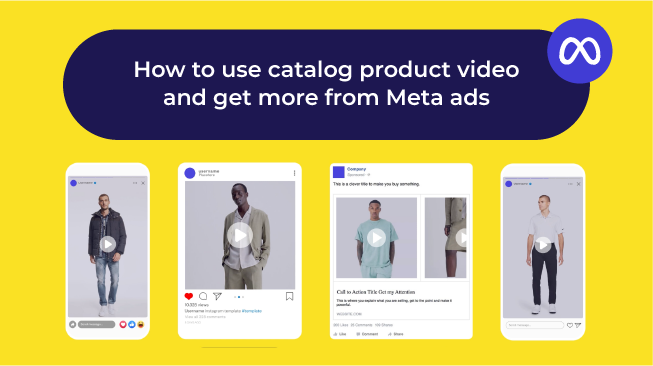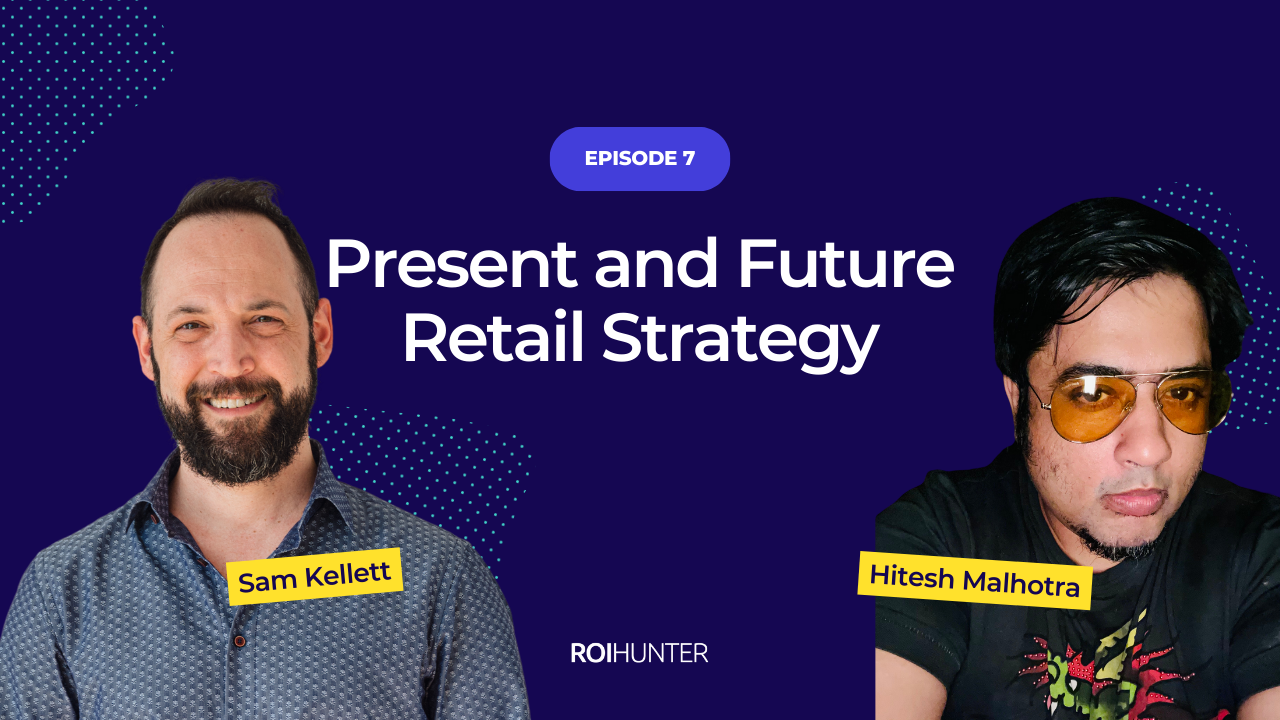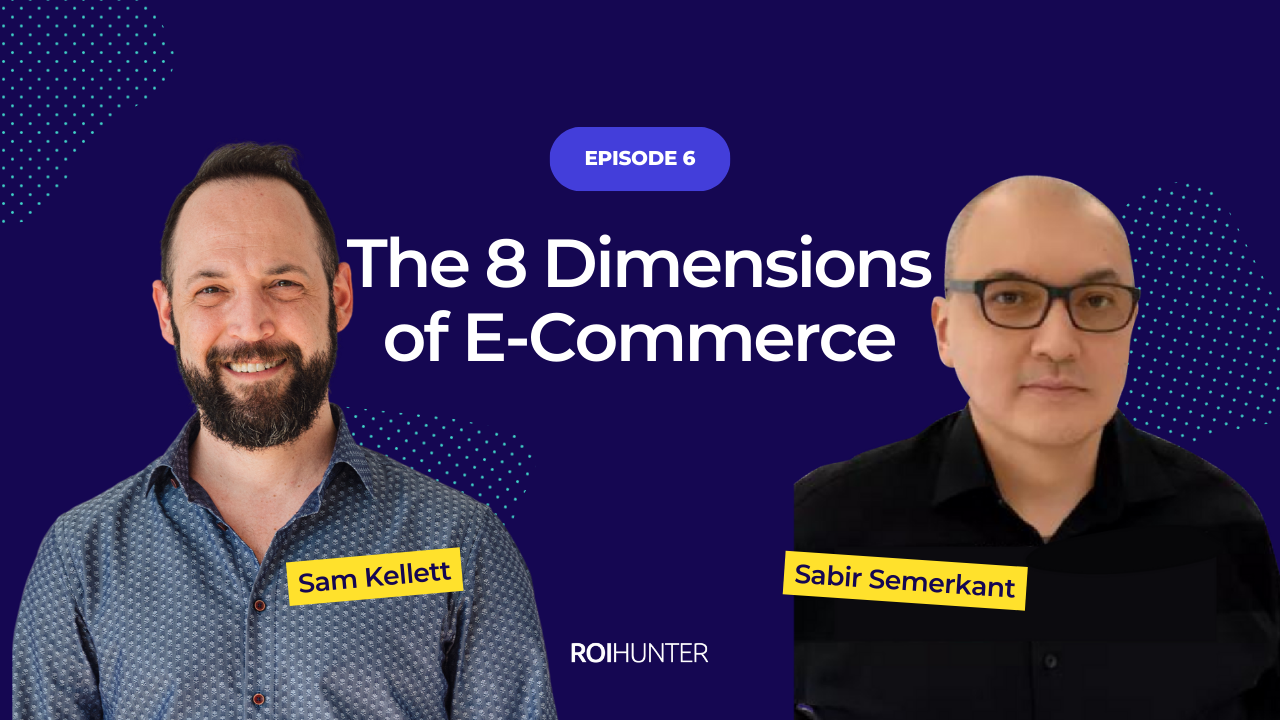Quick links:
- Facebook increased revenue per user
- Facebook decreased ads per user
- Stories are the next big thing
- Stories are taking over the world
- How do you make Stories work?
- 5 rules for Stories creatives
More advertisers (Facebook is successfully increasing revenue per users) and limited amounts of advertising space (see Mark’s announcement below) are causing higher auction prices. The only way to solve this is to find new opportunities. We will explain to you now what this shift looks like, and how you can benefit from it.
Facebook increased revenue per user
Facebook decreased ads per user
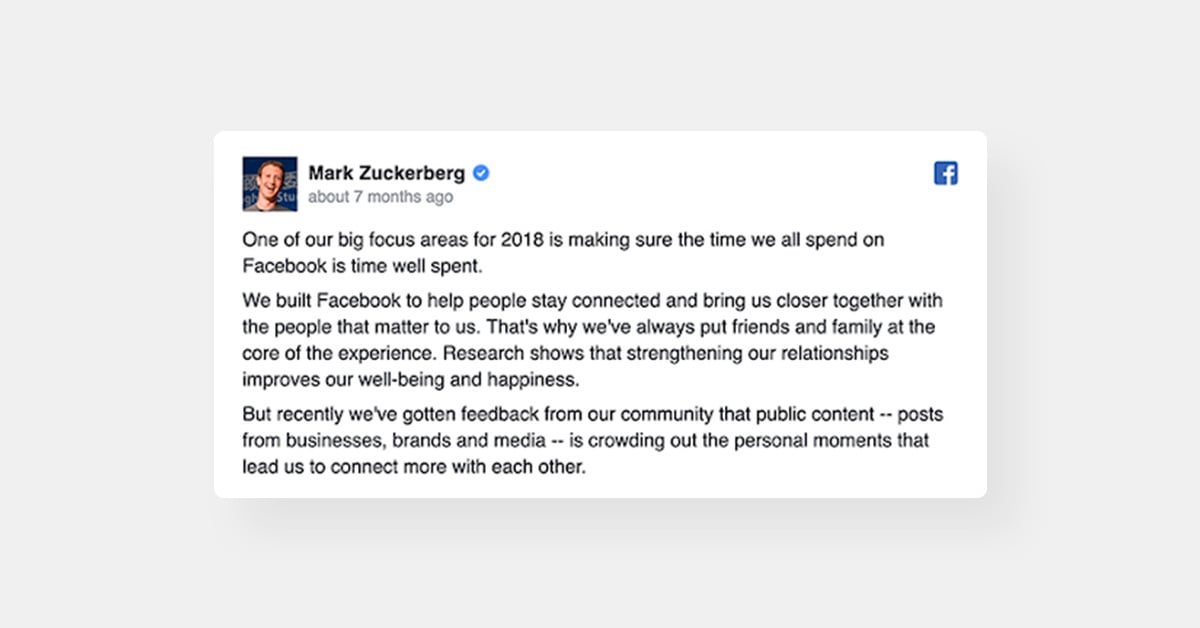
What can E-commerce marketers do about this? For E-commerce, this means that advertising is going to be more expensive. As we can observe in ROI Hunter, advertisers can keep the price at the same level to preserve their unit economy, but they have to find new ways to advertise. The best way to do that is to observe how user behavior is changing.
So what is the next big thing? STORIES
You can see the growth of Daily Active Users during last 2 years and it is clear that users attention is massively shifting towards stories at both FB and Instagram:
Stories are taking over the World
What is the most exciting thing here? We have been doing research based on 500 ad sets with automatic placement. On average, we found out that the CPM in stories is up to 2.5x less expensive compared to the newsfeed. We are aware of the fact that Facebook is expensive; it is not possible to add more ad space in there - hence users are coming to stories where the inventory is still available.
There are two nagging problems in News Feed that stories solve. Firstly, most videos aren’t played with sound (because people don’t have their volume turned on), and secondly they aren’t guaranteed to capture the full attention of viewers. Whereas looking through stories is a conscious effort and fills the user's entire screen, therefore, they’ll be more engaged.
In comparison, “stories are viewed in full screen,” and “60 percent are viewed with the sound on”, according to Mark Rabkin, Facebook VP of Ads and Business Platform.
However, the stories are not converting very well - based on our research on 500 ad sets only 2,6% of them were using stories due to low performance for conversion objective.
How do you make stories work? Why don't stories deliver conversions, and what can we do about that?
People behave differently on stories and they expect more engaging content (ideally video) but when you use automatic placement and just have a static square image, Facebook has to produce story format of your ad the only way it knows how, furthermore ,delivering what you can see here. Not an engaging ad and it is so easy to skip it, right?
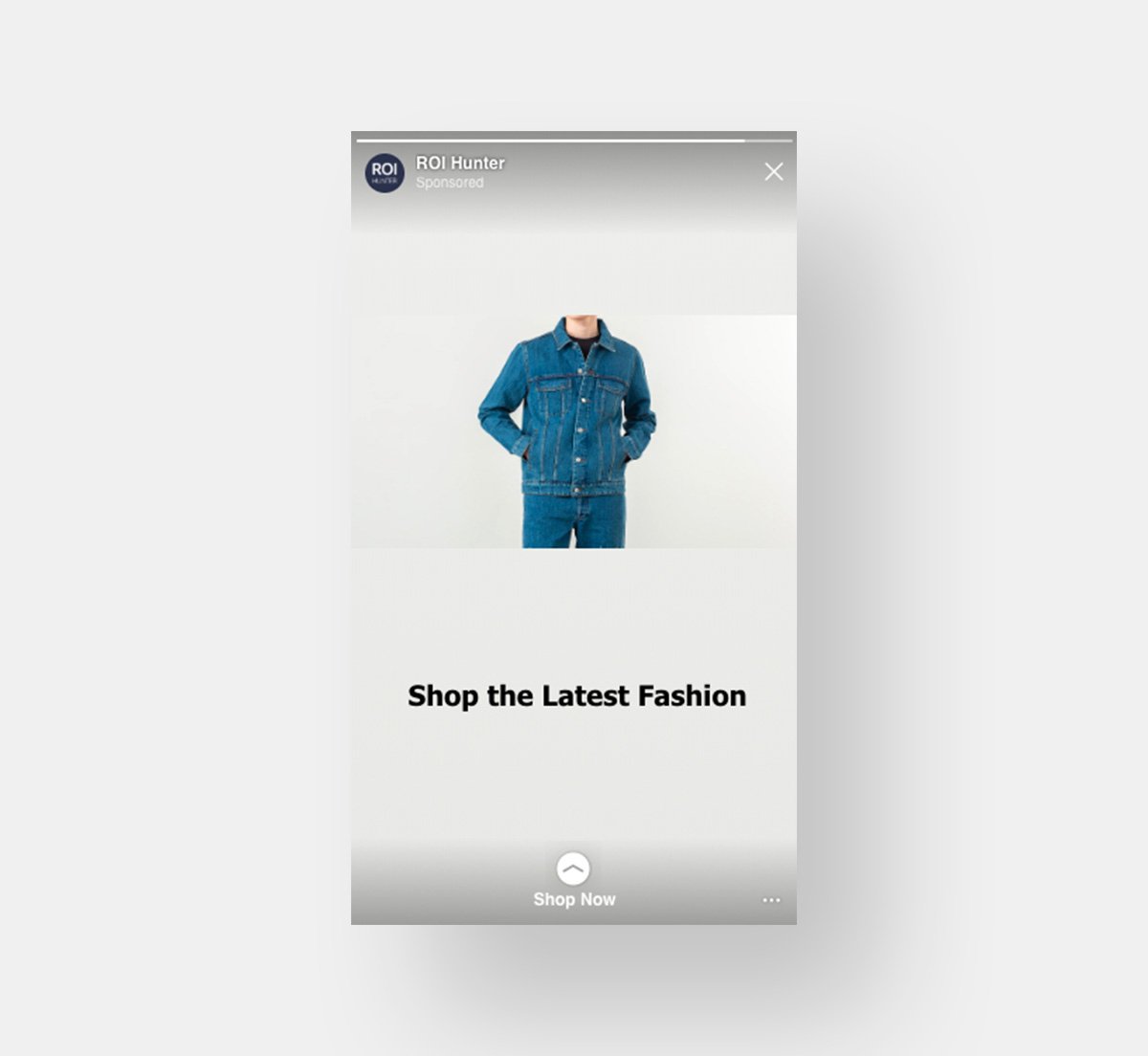
Creatives without video in stories has a low performance because people automatically assume that static images equal advertising.
As written here in one of our previous articles, when confronted with two options, static image or video, the majority of people will choose video.
For thousands of years, our brains have been programmed to watch out for movement. Movement meant possible danger. The same principle applies to video on your mobile devices. Moving images provide more condensed sensory information for our brain. At the same time, our brain automatically processes this information.
Therefore the only way how to succeed on Facebook and Instagram stories is to create a creative that feels like stories.
This is why we built Creative Factory, to enable advertisers to automatically convert their product pictures into a fully customizable video experience at scale. Does it work? See below the same ad created in a Facebook native interface using automatic placement, compared to an ad automatically empowered by Creative Factory:
OK so how do you get the most out of Stories?
Keep these five rules for stories creatives
- Stories = video
- Start quickly from the very beginning. Show your brand, logo, product immediately.
- Use stickers - accustom your creativity to Instagram features
- Include swipe up CTA
- Add more content when clicking to the right side
Moreover, we found that the crucial thing here is choosing the right products for stories. Advertisers should choose trendy products and A/B test them.
What we strongly suggest here is to create more stories and A/B test different products to different audiences. This personalization is essential for stories.
